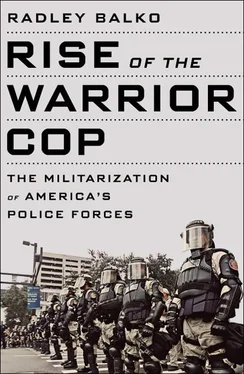G. Gordon Liddy, who the next month would head up the White House “plumbers” group implicated in the Watergate scandal, motivated his PR team with a series of films to educate and inspire them about the power of government propaganda. According to Epstein, Liddy’s movie nights concluded with Triumph of the Will, Leni Riefenstahl’s infamous (but brilliant and effective) 1934 film glorifying Adolf Hitler and the Nazi Party. 47
The scare strategy was executed as planned. Nixon’s June 17, 1971, speech more than met expectations. He declared drug abuse “public enemy number one” and asked for emergency powers and new funding to “wage a new, all-out offensive.” 48Years later, both this speech and a similar one he gave the following year would alternately be considered the start of the modern “war on drugs.” In a poll taken the following month, Americans named drug abuse as the most urgent domestic problem facing the country. 49
A few weeks after the PR offensive, Liddy began working on a new plan to shift enforcement power to the White House. To work around obstinates like Ingersoll at the BNDD, Liddy ensured that the new elite enforcement agency would operate directly out of the White House. It would consist of narcotics “strike forces” to be dispatched across the country and populated with personnel pulled from other federal law enforcement agencies and local law enforcement. They would fund the program through the LEAA, which would allow them to use grants to persuade local police departments to cooperate. The strike forces would get high-profile, media-friendly arrests, generate empty but impressive-sounding arrest statistics Nixon could tout, and operate directly under Nixon and his top aides. By autumn, Nixon had given it the green light. 50
The new agency would be called the Office of Drug Abuse Law Enforcement, or ODALE. Nixon appointed forty-four-year-old Myles Ambrose to lead it. Ambrose favored a much more aggressive, rough-’em-up style of drug enforcement. He had been head of Customs during Operation Intercept, and it probably didn’t hurt that these clashing philosophies about law enforcement had led to repeated feuds with Ingersoll, the BNDD head who was currently a thorn in Nixon’s side. Ingersoll only learned about the new agency while watching a TV news special in late December 1971. 51
But ODALE was always strictly for show. It would never have more than a few hundred agents. Nixon’s executive order creating the agency even included an eighteen-month sunset provision. That wasn’t nearly enough time or personnel to fulfill the agency’s lofty mission to “stop the proliferating addict population.” ODALE existed to show off the Nixon administration’s showpiece crime tools—no-knock raids, copious use of wiretaps, preventive detention, and the power to jail witnesses who refused to testify before grand juries. Federal narcotics agent John Finlator would say in a couple years that the office “was strictly a political thing. They were trying to prove the No. 1 problem was drugs, as Nixon said. They were under pressure to produce.” 52
In March 1972, all was set to go. The strike forces began… striking. The problem was that they weren’t always sure exactly what they were striking. 53
HUMBOLDT COUNTY, CALIFORNIA, LIES ABOUT TWO HUNDRED miles north of San Francisco along the Pacific Coast. It is vast, mountainous, heavily forested, and sparsely populated country, home to a sizable portion of the state’s towering redwood trees. Over the last several decades, the county’s immensity, forest cover, and terrain have made it ideal for covert marijuana cultivation—and the hippie, agrarian pot culture that goes with it. And that has often put Humboldt County in the crosshairs of the drug warriors. On April 4, 1972, just a few weeks after the new Office of Drug Abuse Law Enforcement (ODALE) was up and running, Humboldt was also the setting for the violent death of twenty-four-year-old Dirk Dickenson, the first fatality in Nixon’s new “all-out war on drugs.” 54
Local Humboldt County law enforcement had already produced one drug war casualty. Deputy Mel Ames, a hard-nosed, fifteen-year cop, had a knack for spotting drug offenders. In the spring of 1971, Ames had sniffed out two four-foot-high marijuana plants growing along the Eel River. After setting up a stakeout nearby, he watched for days in hopes of catching whoever had planted them. When the weekend came, he handed watch duty off to twenty-seven-year-old deputy Larry Lema. On October 4, 1970—a bright Sunday afternoon—Lema spotted twenty-two-year-old Patrick Berti, who was on his way to law school in the fall, and a friend walking along the river. When the two stopped to inspect the plants, Lema realized he’d found his pot cultivators. He emerged from the bushes to apprehend them. Lema and Berti, it would turn out, had known one another all their lives. When Lema confronted Berti, Berti turned, still holding a twig from one of the plants in his hand. Lema mistook it for a gun and shot him.
“Christ, Larry, you shot me,” Berti said. Those would be his last words. He died there in the woods. Berti’s friend had grown the marijuana. Berti had merely come to see the plants out of curiosity—he’d never seen pot plants that tall. A Humboldt County grand jury ruled Berti’s death a justifiable homicide. 55
The Humboldt County Sheriff’s Department had since signed on to Nixon’s more warlike federal drug initiative. They welcomed the help. Most local police feared that the county had been overrun by the counterculture. Starting in about 1970, “longhairs” had begun moving into the area and taking up residence in and around the town of Garberville. Probably not coincidentally, there had also been at least a dozen unsolved arsons in that area since 1971. All of the torched buildings had been occupied by the newcomers. If you were to draw a perimeter around the burned residences, somewhere near the middle you’d find the ranch where Dirk Dickenson lived with his girlfriend. In the fall of 1971, Humboldt County sheriff’s deputy Archie Brunkle led a recall campaign against the Garberville justice of the peace for being “too soft on hippies.” He ran the campaign out of the Garberville branch of the Sheriff’s Department.
Against that backdrop, an informant allegedly told the federal Bureau of Narcotics and Dangerous Drugs (BNDD) office in San Francisco that they’d find a major drug operation on Dirk Dickenson’s ranch. Dickenson, the informant said, was running a million-dollar PCP lab. The BNDD office contacted the Humboldt County Sheriff’s Department with the tip, and Undersheriff Bob Bollman agreed to investigate. (Bollman, incidentally, had been running the department since Sheriff Gene Cox had taken leave to treat his own addiction—Cox was an alcoholic.) Bollman assigned Deputy Ames to do some reconnaissance. Ames conducted two flyovers of the property. Neither revealed any signs of a drug lab. So Ames then recruited a local dogcatcher to work his way inside the house, under the guise of investigating a complaint about Dickenson’s two Saint Bernards. The dogcatcher returned and reported that he’d seen some roaches in a few ashtrays around the house. That and the informant’s tip were enough to get a search warrant.
Had they done a bit more research, the Sheriff’s Department might have concluded that a million-dollar drug lab on the property was improbable. The tenants—twenty-four-year-old Dickenson and his twenty-two-year-old girlfriend, Judy Arnold—had no electricity or running water. Upon discovering the two were hippies, the local rancher who supplied power and water to the house had turned both utilities off. So the couple piped in their own water. They did without electricity. Dickenson earned money for the two of them from carpentry and woodworking.
Читать дальше













